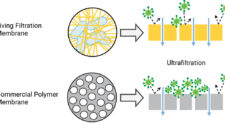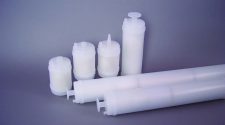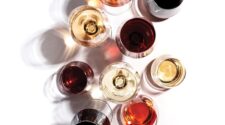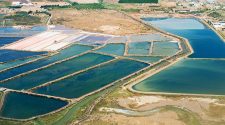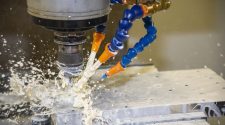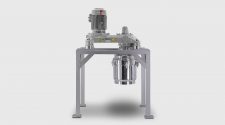- Reverse osmosis membrane elements from LANXESS prove their value in Zellstoff Stendal water treatment
- Application in Germany’s largest industrial water treatment plant
- ASD feed spacers impress with a consistently high level of rejection
- New element grades deliver energy savings of up to four percent
Reverse osmosis membrane elements from specialty chemicals company LANXESS have successfully completed a year-long practical test in Germany’s largest industrial water treatment plant. The new element grades with ASD feed spacers impressed Zellstoff Stendal GmbH based in Arneburg with their performance and consistently high level of rejection. Optimized for applications in brackish water, these Lewabrane-branded elements are characterized by very low energy consumption (LE = low energy) and high fouling resistance (FR = fouling-resistant).
“The outstanding results of our ASD products in benchmark tests with other manufacturers at one of the largest pulp manufacturers in Europe once again underline the extraordinary quality of our products,” said Alexander Scheffler, responsible for LANXESS’s global membrane business.
One year ago, Zellstoff Stendal launched a project to test LANXESS’s newly developed Lewabrane ASD range of membrane elements. This involved installing conventional reverse osmosis (RO) elements with a standard feed spacer and FR elements with LANXESS’s new ASD spacer in parallel in a single pressure vessel. The LANXESS spacers have a special “netting” that reduces biological growth and particle fouling by minimizing dead zones. The netting has an alternating strand design (ASD) of thin and thick filaments, which is what gives the spacer its name.
Frank Gorges, plant technician for water treatment at Zellstoff Stendal GmbH in Arneburg, was excited about the result: “We were very impressed by the performance of the ASD membrane elements from LANXESS. We test a lot of products in our plant and hardly any of them have been able to provide such consistently high results throughout an entire year.”
During the period of the project, the LANXESS RO elements demonstrated excellent performance and impressed with a consistently high level of rejection. This has a positive effect on the service life of the mixed bed and the amount of chemicals required for regenerating the ion exchangers.
After one year, the elements were removed and taken to the applications laboratory LANXESS operates in Bitterfeld for an “autopsy”. Compared to a standard element, there was hardly any increased pressure drop along the element when using the ASD grades. This indicates less blockage from fouling or biological growth.
Improved productivity
In addition to the fouling-resistant Lewabrane B400 FR ASD grade tested by Zellstoff Stendal, LANXESS also offers Lewabrane B400 LE ASD, another premium product where the innovative feed spacers have improved productivity by four percent. For users, this means potential energy savings of approximately the same percentage.
Computational fluid dynamic (CFD) simulations had previously indicated that RO elements with ASD feed spacers would indeed be capable of achieving higher performance levels than standard grades. Furthermore, the tendency toward fouling in the element is reduced. “As we calculated, using the new elements reduces energy requirements while at the same time increasing service lives,” said Dr. Jens Lipnizki, head of Technical Marketing Membranes in the Liquid Purification Technologies (LPT) business unit at LANXESS.
LANXESS water treatment technologies for pulp manufacturing
Zellstoff Stendal, part of the American-Canadian Mercer International Group, is the largest and most cutting-edge manufacturer of NBSK (Northern Bleached Softwood Kraft) market pulp in Central Europe. With their outstanding properties – especially their high tensile strength and high degree of whiteness – these pulps are used, for example, for high-quality printing and copying paper, wallpaper bases, household paper such as paper tissues and kitchen roll, filter paper and a range of other specialist papers like silicone base paper.
Wood elements such as bark and lignin that are not used for pulp production are incinerated in boiler plants. A combined heat and power process in this case generates heat energy that is used as process steam and electricity. Located in the north of Saxony-Anhalt, the plant generates enough power to cover its own needs and also feeds a large part of the renewable energy generated into the public electricity grid.
More than 50,000 cubic meters of water are needed every day for pulp manufacturing in Arneburg, and this is treated using reverse osmosis and ion exchange resins. The Lewatit MonoPlus S 100 and Lewatit MonoPlus M 600 grades are used in the multistep process, while Lewatit MonoPlus SP 112 H and Lewatit MonoPlus MP 500 are used in the mixed bed.
Detailed information about products from the LPT business unit can be obtained online at http://lpt.lanxess.com.
LANXESS is a leading specialty chemicals company with sales of EUR 7.7 billion in 2016 and about 19,200 employees in 25 countries. The company is currently represented at 75 production sites worldwide. The core business of LANXESS is the development, manufacturing and marketing of chemical intermediates, additives, specialty chemicals and plastics. Through ARLANXEO, the joint venture with Saudi Aramco, LANXESS is also a leading supplier of synthetic rubber. LANXESS is listed in the leading sustainability indices Dow Jones Sustainability Index (DJSI World) and FTSE4Good.


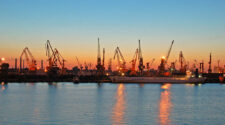
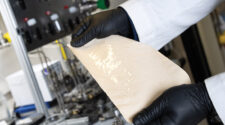
![Figure 1: Differentiation with membranes based on the famous Robeson diagram that plots selectivity vs. permeability. From Reference. [4]](https://www.filtnews.com/wp-content/uploads/IFN_042023_membranes_Figure1-225x125.jpg)
